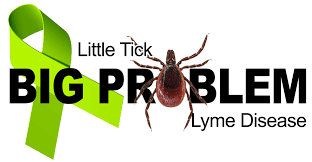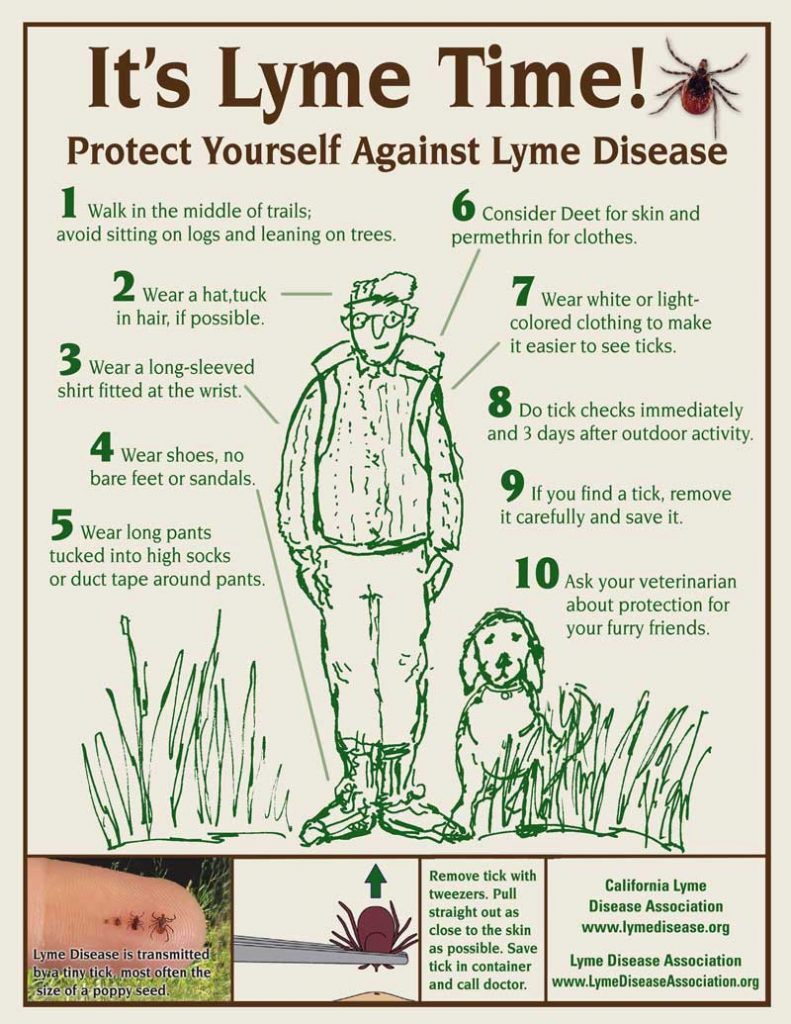Lyme Disease Awareness Month

This month is Lyme Disease Awareness Month. Throughout the United States, organizations such as LimeDisease.org and the Global Lyme Alliance are working to increase awareness and educate the population about Lyme disease symptoms and treatments.
Lyme disease is a bacterial infection transmitted to humans through infected black-legged ticks, also known as deer ticks. Once a person is infected, they may experience fever, headache, fatigue, and a skin rash. If the disease isn’t treated promptly, the disease can spread to the nervous, musculoskeletal, neurovascular, and cardiovascular systems.
When people are bitten by a tick, they usually don’t even realize it because a tick is the size of a poppy seed and there is no pain associated with the bite. The Centers for Disease Control and Prevention (CDC) reports that 300,000 are diagnosed annually in the United States. Since the disease mimics symptoms of other diseases, it is often misdiagnosed. Because of this, experts think that the actual number of cases is significantly higher.
It’s important to note that not all ticks are infected with Lyme. If you’ve been bitten, follow these important steps to lower your risk of Lyme disease.
- Use a tweezers to carefully grasp as much of the tick as possible.
- Pull upward with consistent pressure. Avoid jolting movements because this can cause the tick’s mouth to remain in your skin. Remove the tick in one piece if possible. If not, remove all parts.
- Wash your hands and the entire affected area both with rubbing alcohol and soap and water.
- Place the tick in alcohol in a sealed plastic bag so you can bring in for identification or flush it down the toilet.
- If you have a rash, fever, fatigue, headache, muscle pain, joint swelling or pain within 30 days after removing the ticket, visit your physician and explain when and where you had the bite. Your physician may opt for diagnostic testing to confirm if the presence of Lyme. If the results are positive, you will likely require an antibiotic regimen.
Lyme disease is found throughout the United States. But there are steps you can take to lower your risk of getting Lyme disease. Follow the tips below to stay safe while enjoying the outdoors.
- Stay out of tick habitats such as grassy, woodsy areas
- Wear insect or tick repellant when outdoors in areas where deer ticks live
- Remove ticks quickly and thoroughly
- Use pesticides to keep bugs away from your living area

Florida Pest Control Center (FPCC) pest removal experts, also known as “America’s bed bug whisperer,” company, sets the standard for pest control service with residential, commercial and industrial customers. In fact, our non-exclusive access to the University of Florida’s urban pest management and modern pest control technology experts enables us to customize the most effective treatment plans for every situation.
We employ comprehensive, state-of-the art technologies, chemical, and non-chemical treatments to eliminate pest problems. Our highly trained professionals are knowledgeable, discrete and thorough, providing a fast, complete solution to your pest issue. Florida Pest Control Center (FPCC) services are licensed, insured, and guaranteed.
Safe. We use the safest treatments available.
Easy. We make it as easy as we can on you and your family.
Effective. Our treatments will effectively remove bed bugs from your home.
Florida Pest Control Center (FPCC)
Local: 954-945-5050
